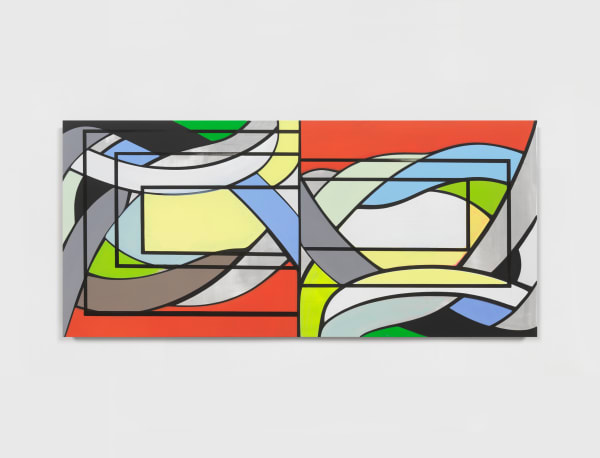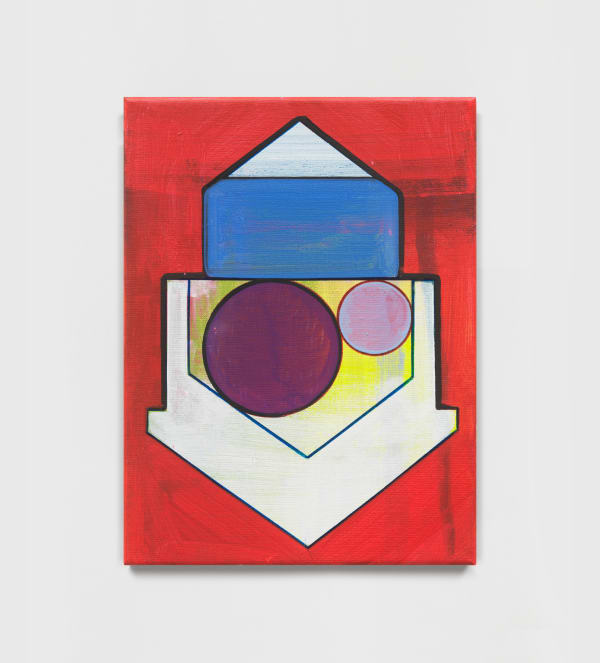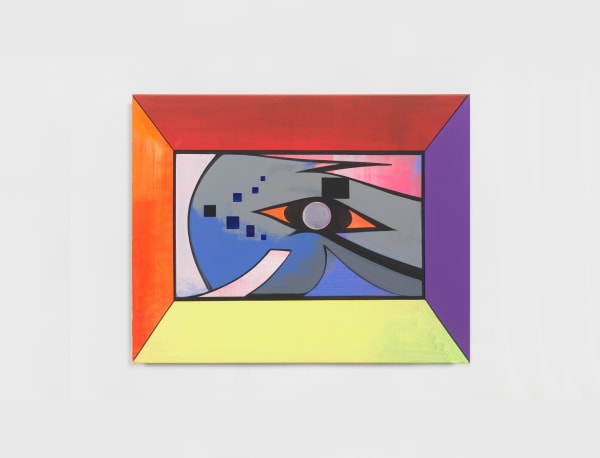Internationally renowned for his mastery of painting, Scheibitz subverts traditional notions of the medium with radical juxtapositions of color and a unique formal language that lands ambiguously between abstraction and representation. Drawing from classical painting and architecture, the contemporary urban landscape, and popular culture, Scheibitz deconstructs and recombines signs, images, shapes, and architectural fragments in ways that challenge expected contexts and interpretations.

Scheibitz’s practice has been at the center of contemporary artmaking since the late 1990s with early solo exhibitions at the ICA London, the Stedelijk Museum, Amsterdam, and the Berkeley Art Museum, University of California, Berkeley, as well as breakthrough presentations at the German pavilion of the 51st Venice Biennial, MUDAM Luxembourg, Centre d'Art Contemporain Geneva, Neue Nationalgalerie Berlin, and more recent major shows at Kunstmuseum Bonn, MMK Frankfurt, and Pablo Picasso x Thomas Scheibitz at the Museum Berggruen, Berlin.




In an age of infinite images and visual information, Argos, the multi-eyed, all-seeing guardian giant of Greek mythology, serves as a kind of avatar for Scheibitz. Like the panopticon-esque figure, the artist's painting and sculpture absorb and dissolve visual material, encoding and decoding, mapping, measuring, penetrating and exploring a pictorial inventory. For Scheibitz, Argos Eyes are the observers of events and circumstances; that which we see directly, or indirectly via our ubiquitous technological devices, lenses, and screens.

For the artist, a picture has always been a summary of different sources of observations and experiences which remain in the mind's eye like "double exposures”. The eye, or by proxy the lens, is the entrance to the conscious or unconscious processing of what we see or do not see. A fundamental question for the artist remains the philosophical question: do we only see what we already know?




In the main ground floor gallery, Scheibitz presents a dynamic range of painterly compositions. Bringing together selections from his vast lexicon of images, Scheibitz builds up these compositions meticulously yet intuitively, using maquettes, drawings, collage, photography, and sketches. Recognizable forms such as eyes, cubes, droplets, and pyramids are translated into multilayered and complex pictorial structures that urge the viewer to consider multiple perspectives.

In the upstairs galleries, more intimately scaled paintings encircle the room, in addition to an Atlas-like master table filled with models, stencils, and other tools representative of the repeated motifs found in the artist’s studio. This conceptual landscape illustrates the core nature of the work, offering interrelated exercises in form, color, and material.













Born in 1968 in Radeberg, Germany, Scheibitz is currently based in Berlin. He studied at the Dresden Academy of Fine Arts (Hochchschule für Bildende Künste Dresden) from 1991-1998, where he received an MFA under Professor Ralf Kerbach (1998).
In 2005, Scheibitz represented Germany at the 51st Venice Biennale in a two-person pavilion presentation with Tino Sehgal. More recently, Museum Für Moderne Kunst in Frankfurt presented the artist’s first survey exhibition entitled ONE-Time Pad, which traveled to the Baltic Centre in Gateshead, UK from 2012-2013. Other notable solo presentations include Der ungefegte Raum at Galerie im Taxispalais in Innsbruck, Austria (2010), and about 90 Elements/TOD IM DSCHUNGEL, which opened at the Irish Museum of Modern Art in Dublin in 2007 and traveled to Camden Arts Centre in London and Musée d’Art Moderne Grand-Duc Jean in Luxembourg in 2008.
His paintings and sculptures have also been included in important group exhibitions at the Tate Modern in London, Museum of Modern Art in New York, MUDAM Luxembourg, San Francisco Museum of Modern Art, Museum Boijmans in Rotterdam, Aspen Art Museum in Colorado, São Paulo Museum of Art, Museum der Bildenden Künste in Leipzig, Germany, Albright-Knox Art Gallery in New York, and Caixa Forum in Barcelona, among others.
Scheibitz’s work is well represented in private and public collections worldwide, including those of the Museum of Modern Art in New York, Carnegie Museum of Art in Pittsburgh, Tate Modern in London, Hamburger Bahnhof Museum für Gegenwart in Berlin, Musée d’Art Moderne Grand-Duc Jean in Luxembourg, Museum of Contemporary Art in Los Angeles, Museum of Contemporary Art in Chicago, Pinakothek der Modern in Munich, Sammlung Goetz, Munich, San Francisco Museum of Modern Art, and the Stedelijk Museum in Amsterdam, among others.